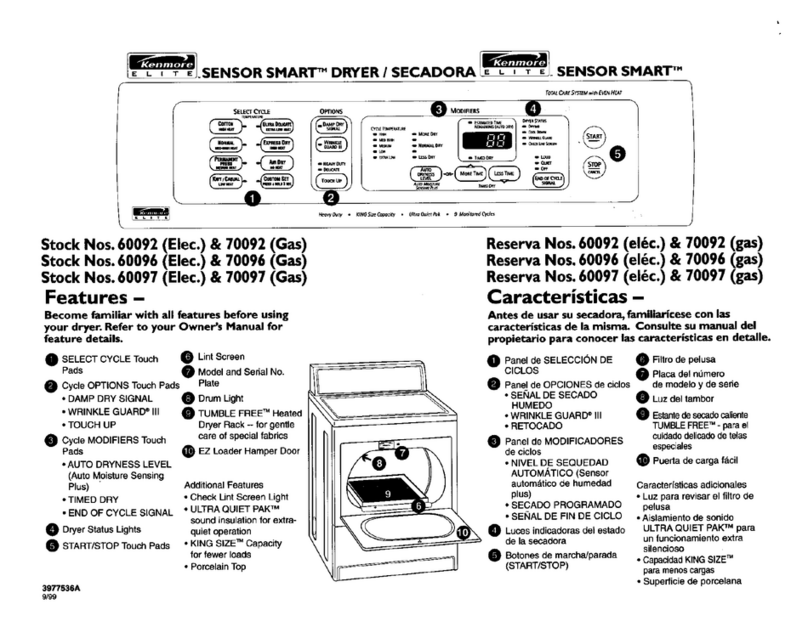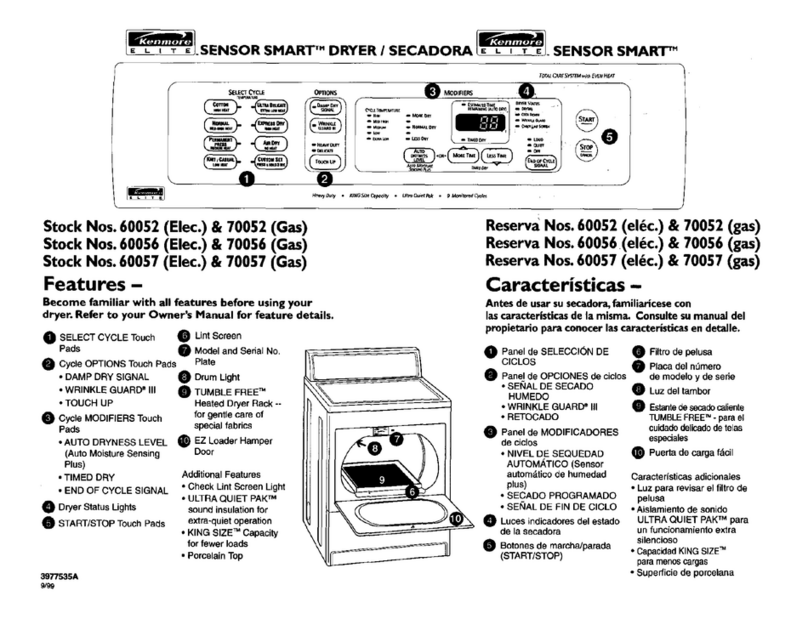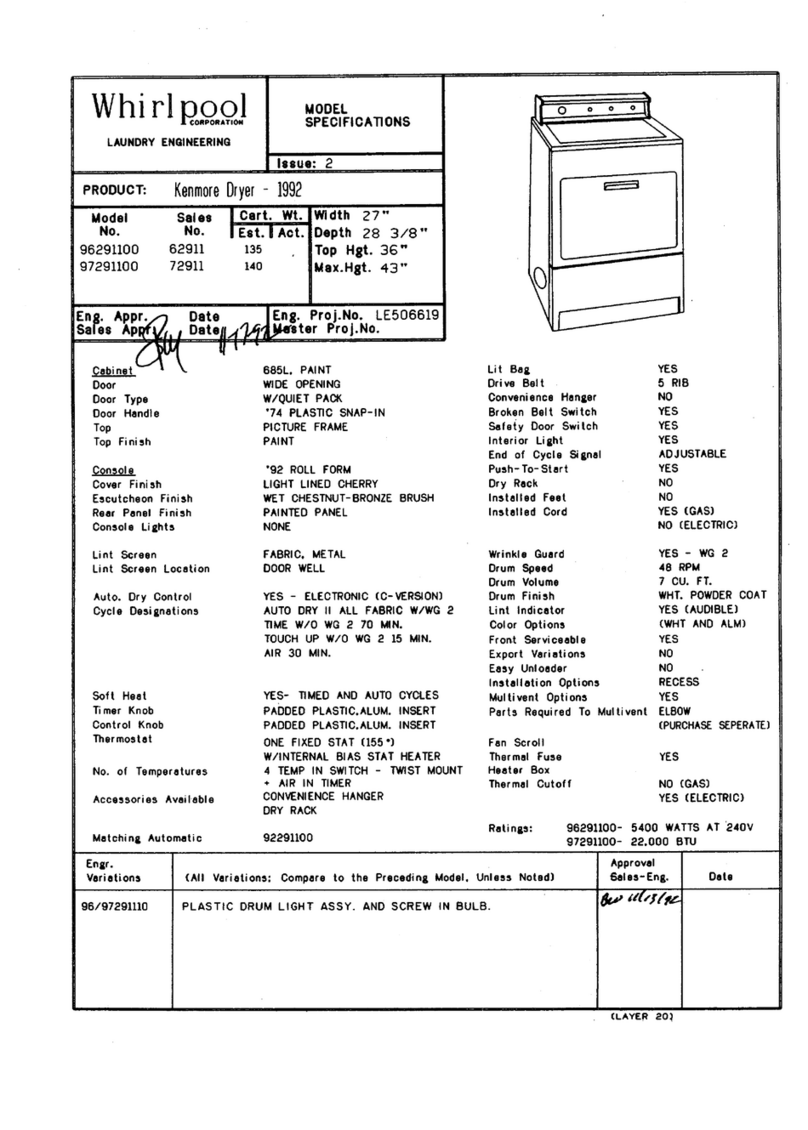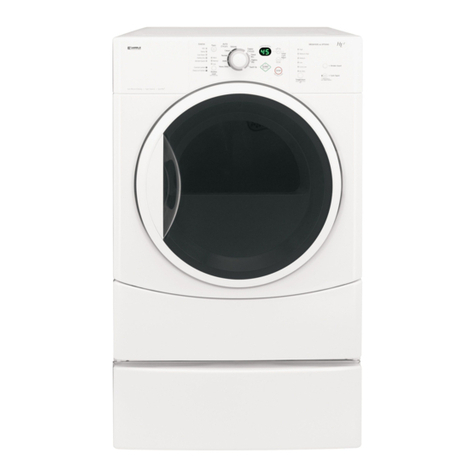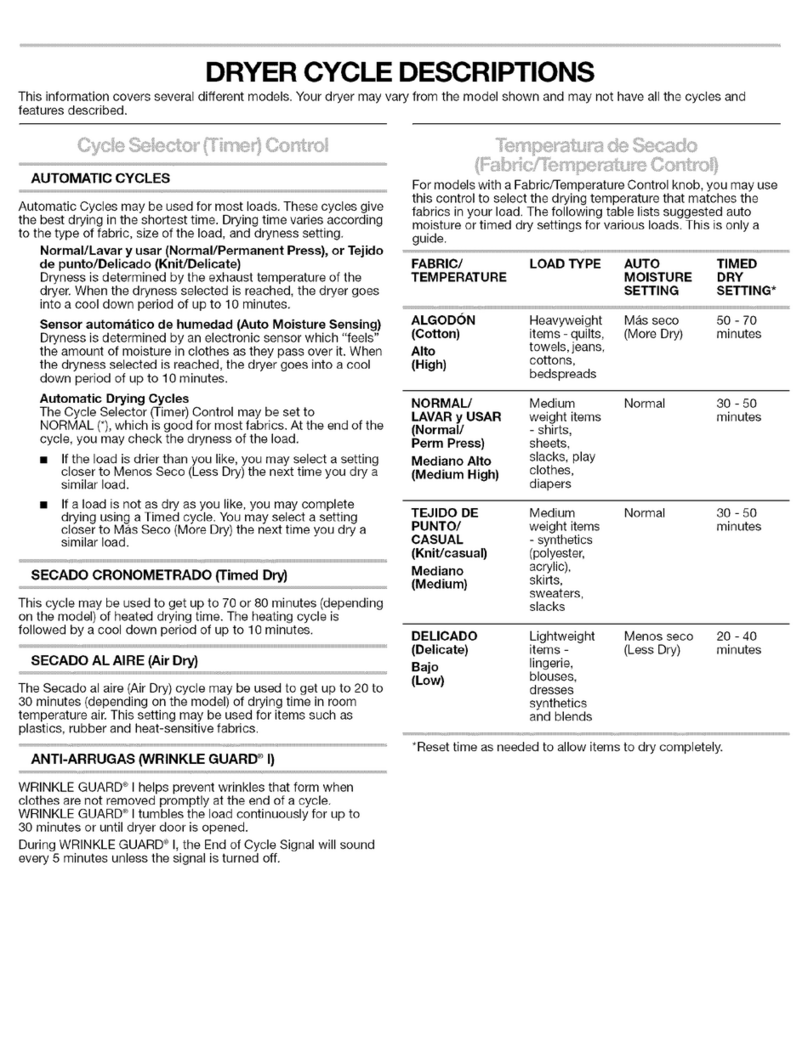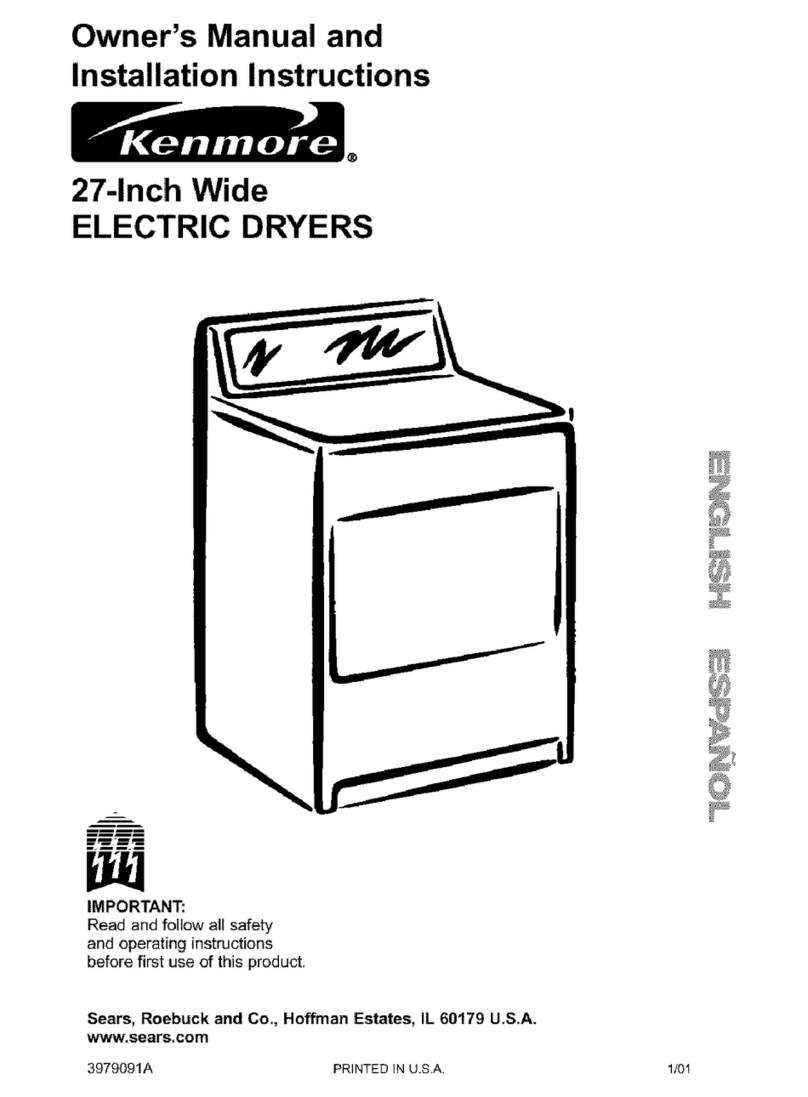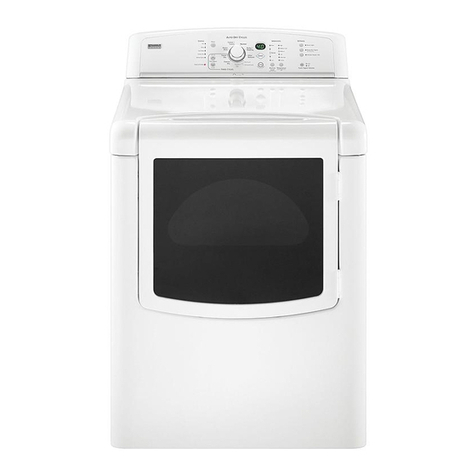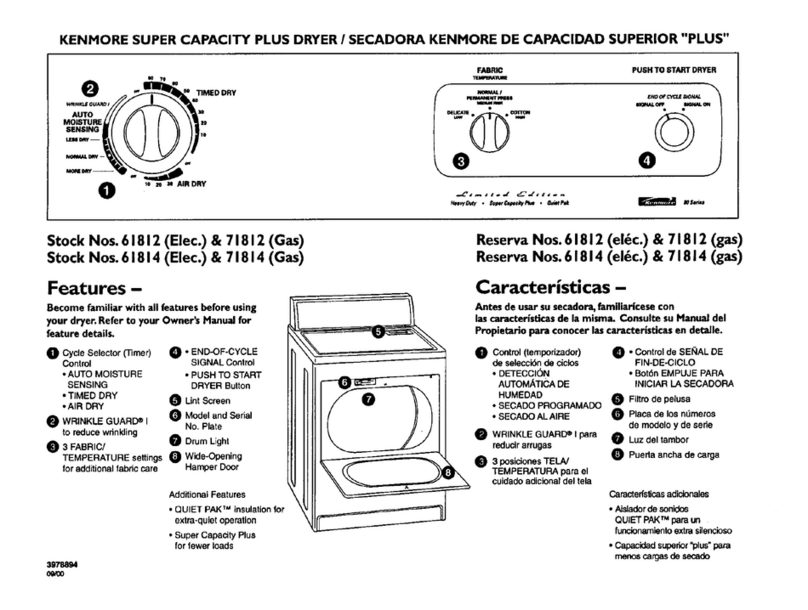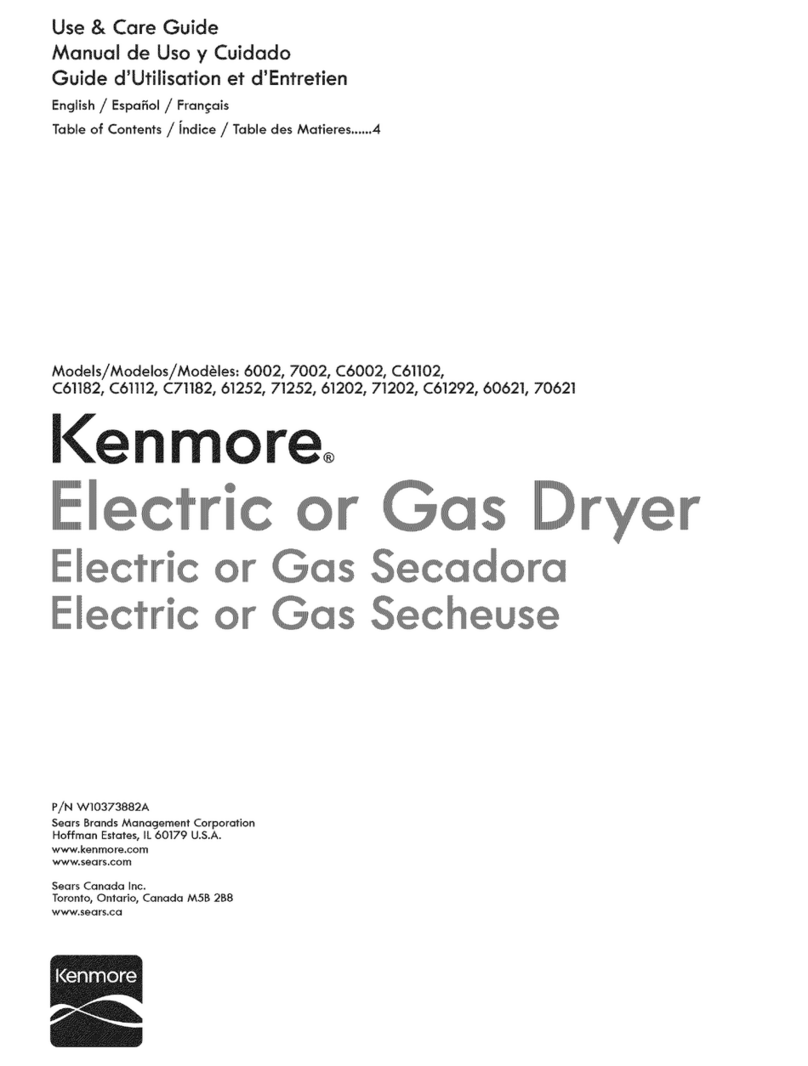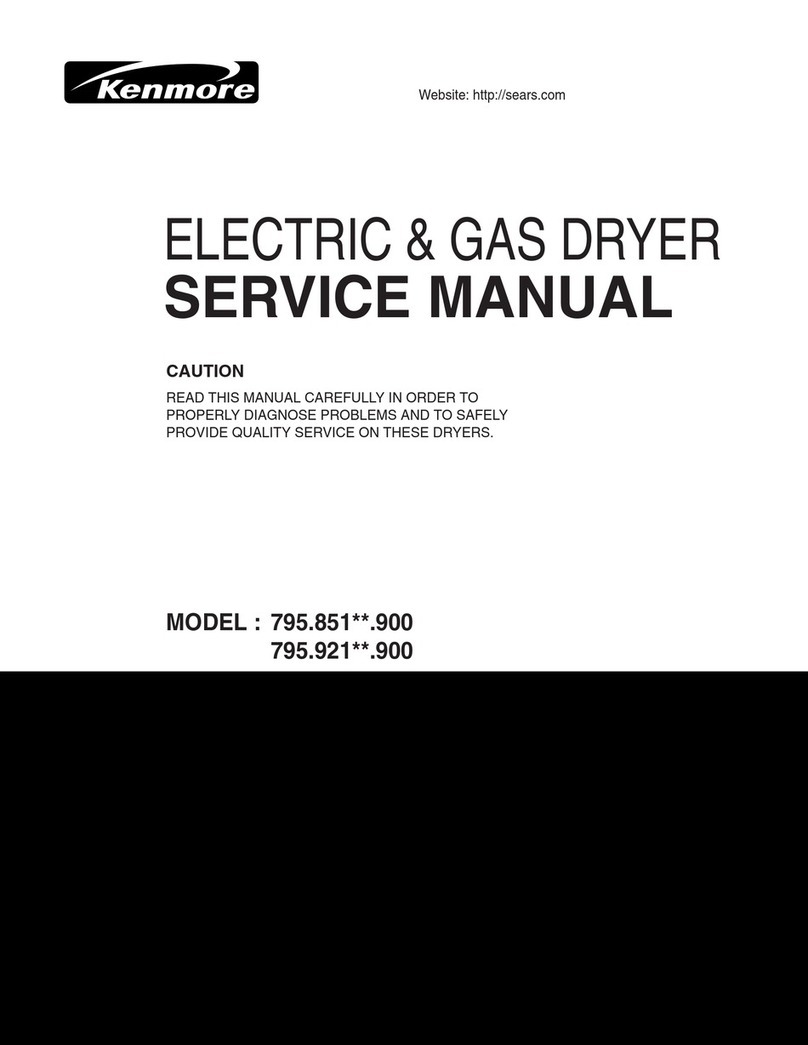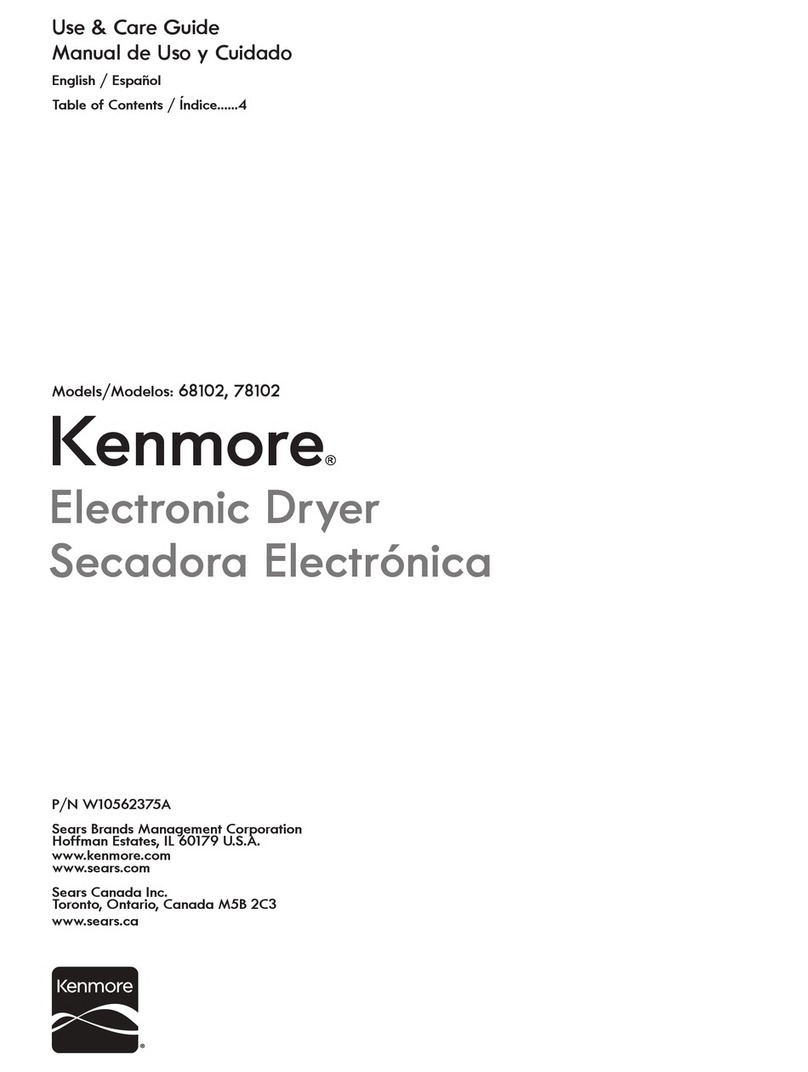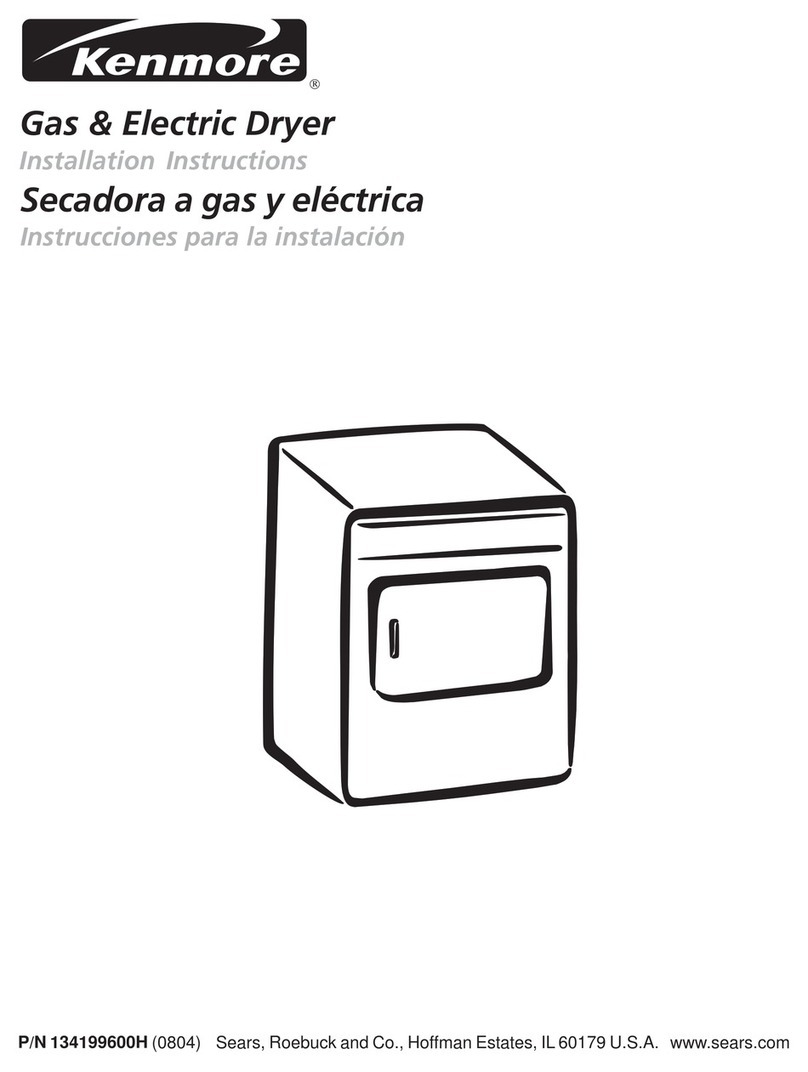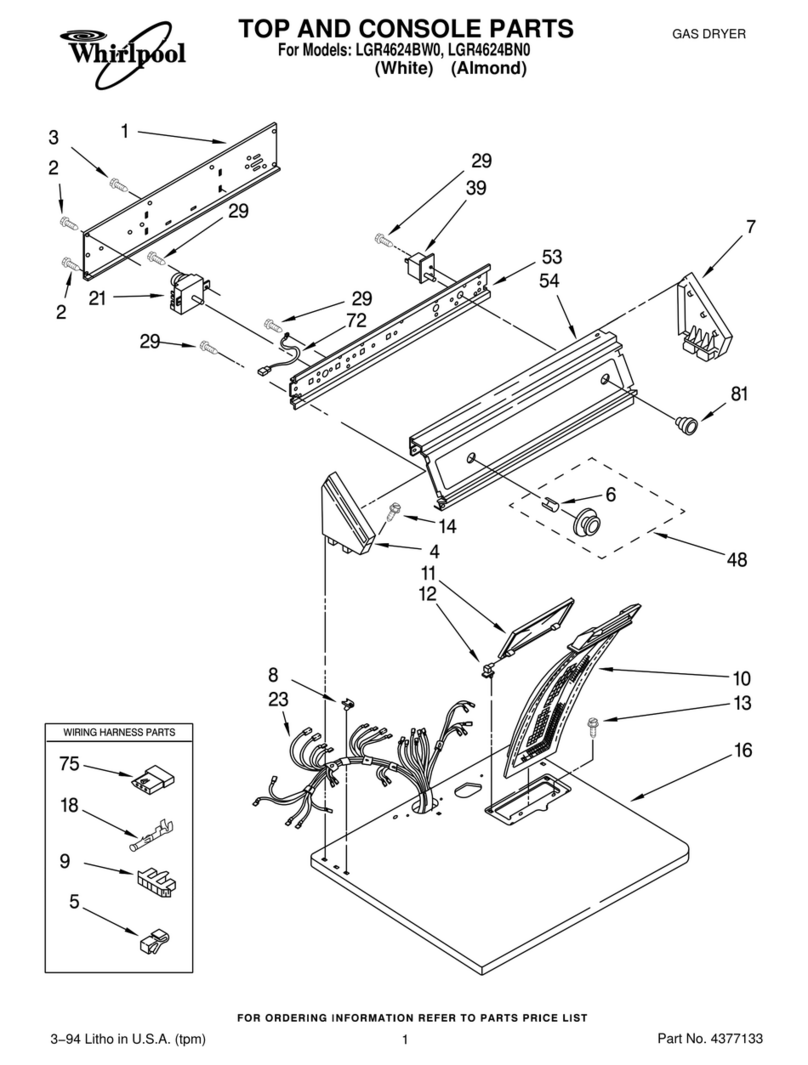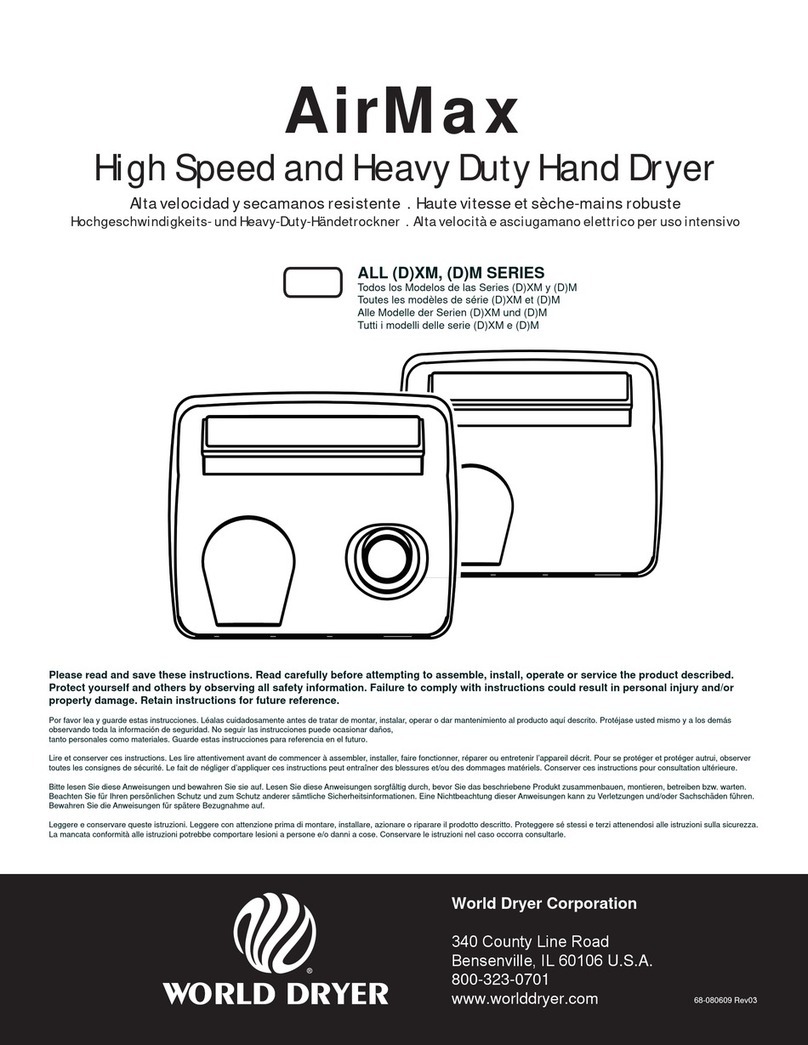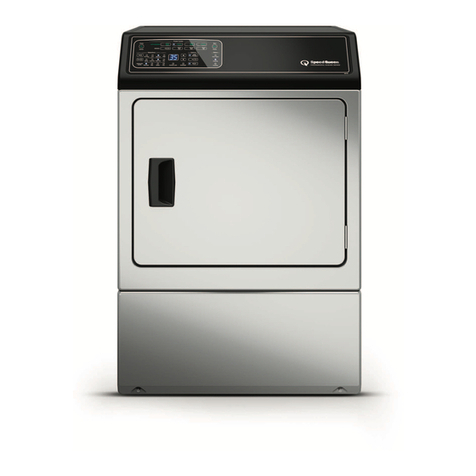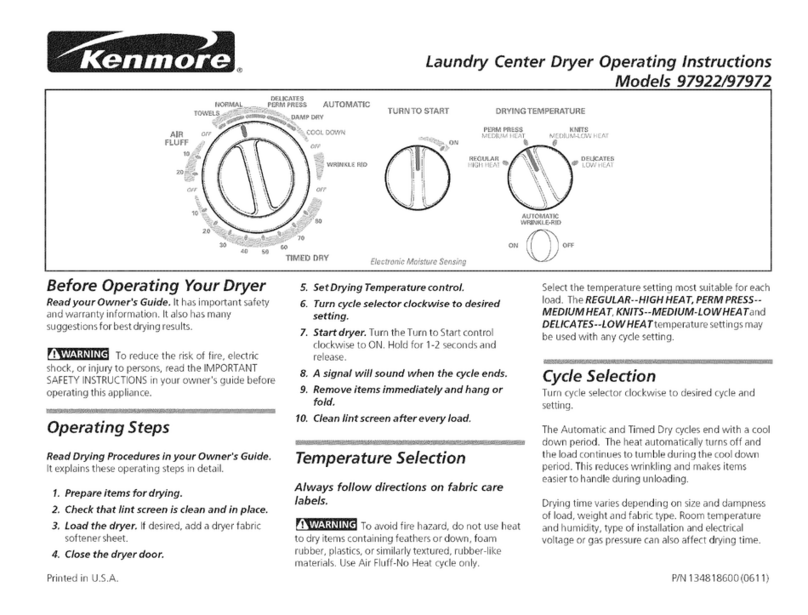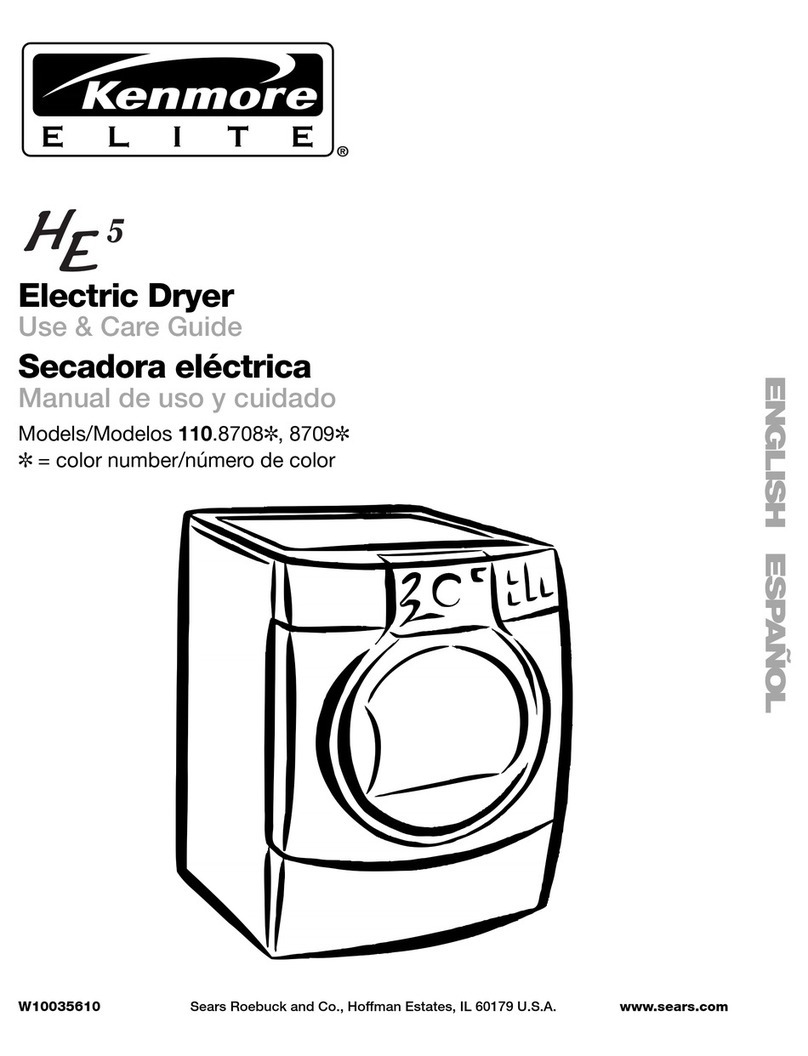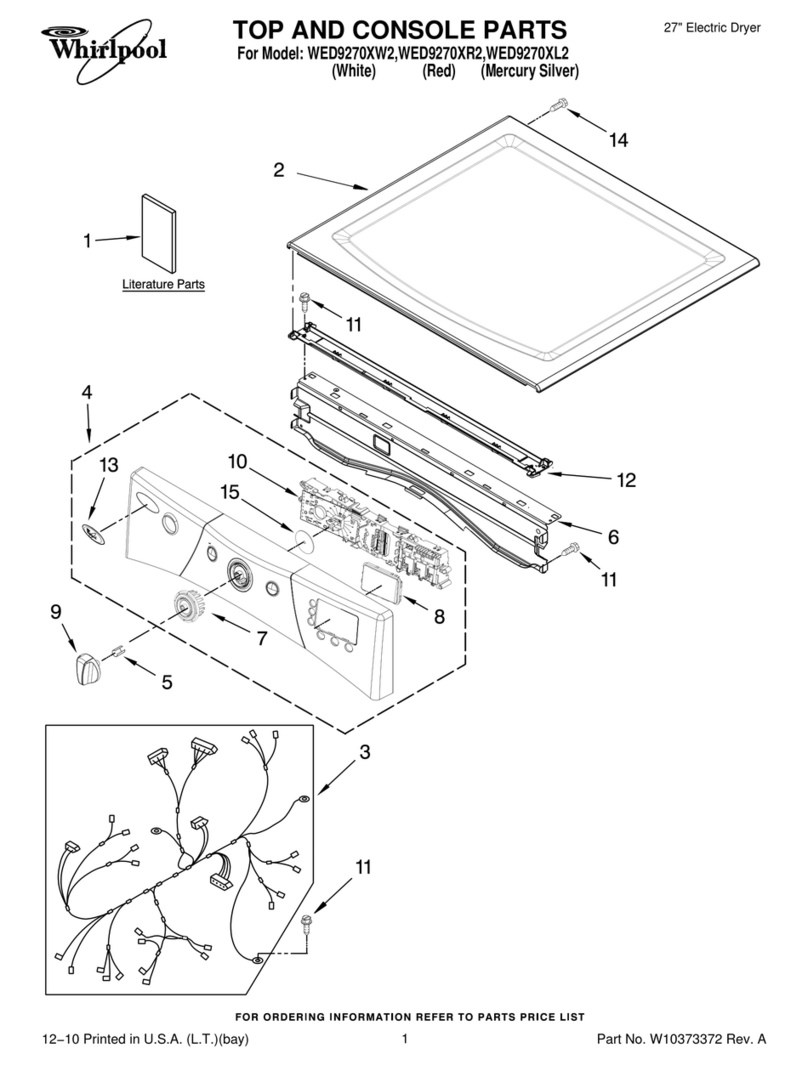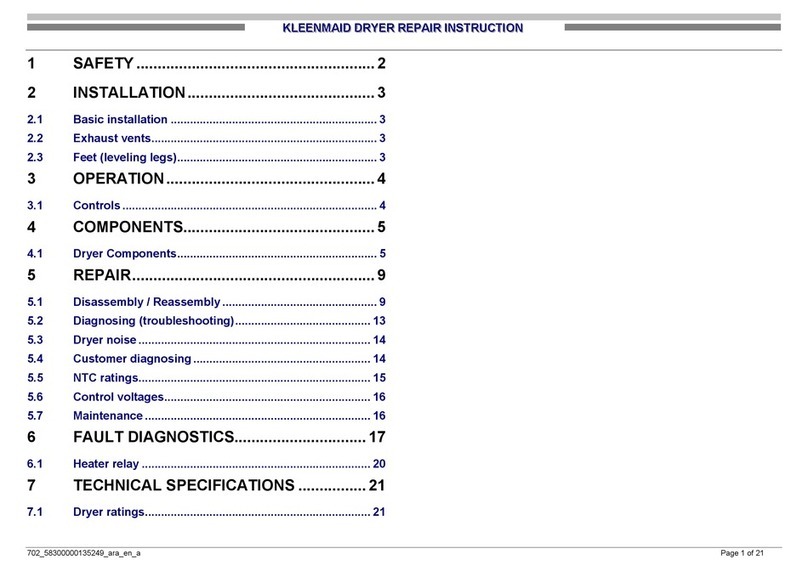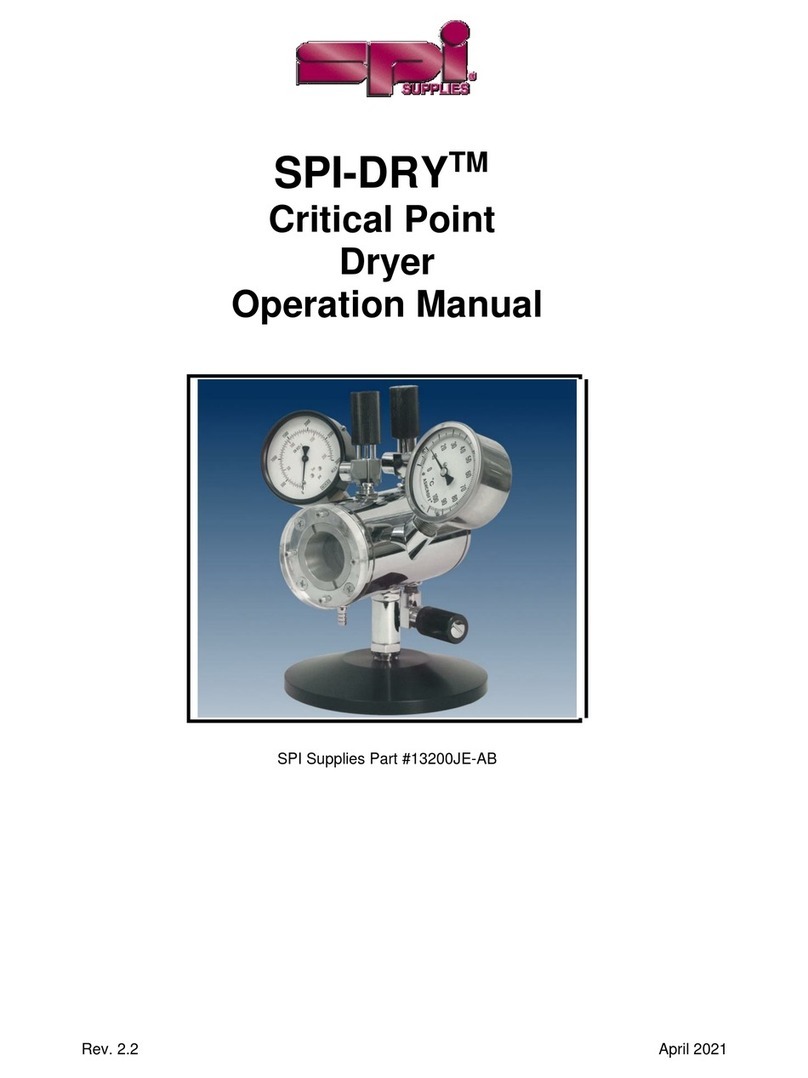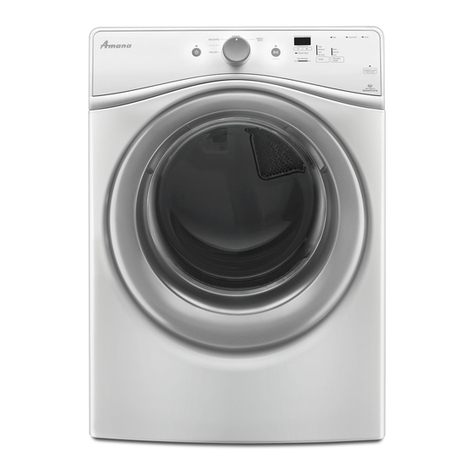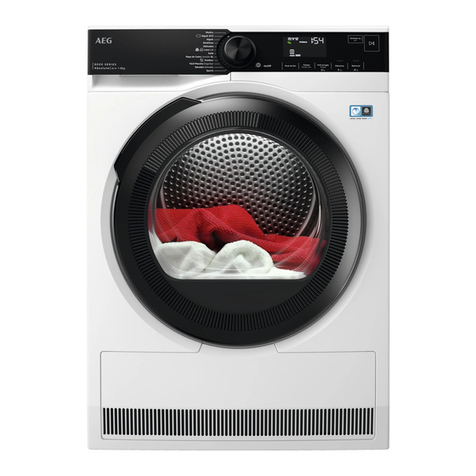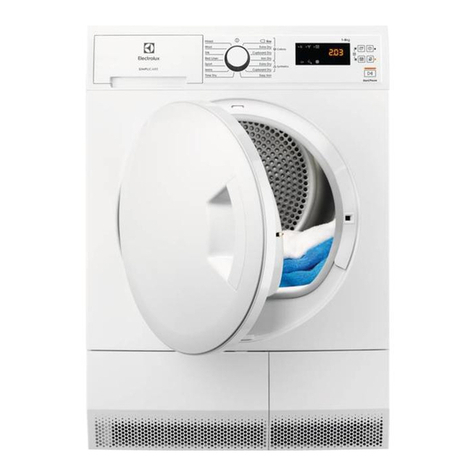
Table of Contents
DRYER SAFETY ..................................... 2
CHECK YOUR VENT SYSTEM
FOR GOOD AIR FLOW ..................... 4
USE AUTO MOISTURE SENSINGTM/
AUTO DRY CYCLES FOR BETTER
FABRIC CARE AND ENERGY
SAVINGS ............................................... 4
CONTROL PANEL
AND FEATURES .................................... 5
CYCLE GUIDE ....................................... 6
USING YOUR DRYER .......................... 7
DRYER CARE ......................................... 9
TROUBLESHOOTING ......................... 11
PROTECTION AGREEMENTS'. .........13
WARRANTY ......................................... 13
ASSISTANCE OR SERVICE .............. 40
indice
SEGURIDAD
DE LA SECADORA ...........................14
REVISEQUE EL SISTEMA
DE VENTILACION TENGA
UN BUEN FLUJO DE AIRE................16
USE LOS CICLOS AUTO MOISTURE
SENSING TM (Detecci6n autom6tica
de humedad)/AUTO DRY (Secado
autom6tico) PARA UN MEJOR
CUIDADO DE LAS TELASY AHORRO
DE ENERG{A.......................................16
PANEL DE CONTROL
YCAFUkCTERISTiCAS.......................17
GUIA DE CICLOS ..............................18
USO DE LA SECADORA .................19
CUIDADO DE LA SECADORA.........21
SOLUCl6N DE PROBLEMAS...........23
CONTRATOS DE PROTECCI6N .....25
GARANTIA ..................v....................25
AYUDA O SERVICIO TECNICO .....40
Table des mati_res
SECURITE DE LA SECHEUSE ............ 26
VERiFiCATiON D'UNE
CiRCULATiON D'AIR ADEQUATE
POUR LE SYSTEME
D'EVACUATION ................................. 28
UTILISATION DES PROGRAMMES
AUTOMATIQUES POUR UN
MEILLEUR SOIN DU TISSU ET
DAVANTAGE D'F:CONOMIES
D'ENERGIE .......................................... 28
TABLEAU DE COMMANDE
ET CA_CTERISTIQUES ................... 29
GUIDE DE PROGRAMME ............... 30
UTILISATION DE LA SECHEUSE .......31
ENTRETIEN DE LA S_:CHEUSE ......... 33
D_:PANNAGE ...................................... 35
CONTRATS DE PROTECTION ........ 37
GARANTIE ......................................... 37
ASSISTANCE OU SERVICE ............. 40
CHECK YOUR VENT SYSTEM FOR GOOD AiR FLOW
Fire Hazard
Use a heavy metal vent.
Do not use a plastic vent,
Do not use ametal foil vent.
Failure to follow these instructions can result in death
or fire,
Good Air Flow
Along with heat, dryers require good air flow to efficiently
dry laundry. Proper venting will reduce your drying times
and improve your energy savings. See "installation
instructions".
The venting system attached to the dryer plays a big role
in good air flow.
Service calls caused by improper venting are not covered
by the warranty and will be paid by the customer, regardless
of who installed the dryer.
Maintain good air flow by:
[] Cleaning your lint screen before each load.
[] Repiacing piasfic or foil vent material with 4" (102 mm)
diameter heavy, rigid vent material.
[]
[] Using the shortest length of vent possible.
Using no more than four 90 ° elbows in a vent system;
each bend and curve reduces air flow.
[] Removing lint and debris from the exhaust hood.
[] Removing lint from the entire length of the vent system
at least every 2 years. When cleaning is complete,
be sure to follow the "installation Instructions" supplied
with your dryer for final product check.
[] Clearing away items from the front the dryer.
USE AUTO MOISTURE SENSINGTM/AUTO DRY CYCLES FOR
BETTER FABRIC CARE AND ENERGY SAVINGS
Use the Auto Moisture SensingTM!Auto Dry cycles to provide the most energy savings and enhanced fabric care from the dryer.
During Auto Moisture SensingTM!Auto Dry cycles, drying air temperature and moisture level are sensed in the load. This sensing
occurs throughout the drying cycle and the dryer shuts off: when the load reaches the selected dryness. Choose Normal cycle to
save energy.
With Time Cycle, the dryer runs the amount of time set and sometimes results in shrinkage, wrinkling, and static due to over-drying.
Use Time Cycle for the occasional damp load that needs a little more drying time or when using the drying rack.
4

